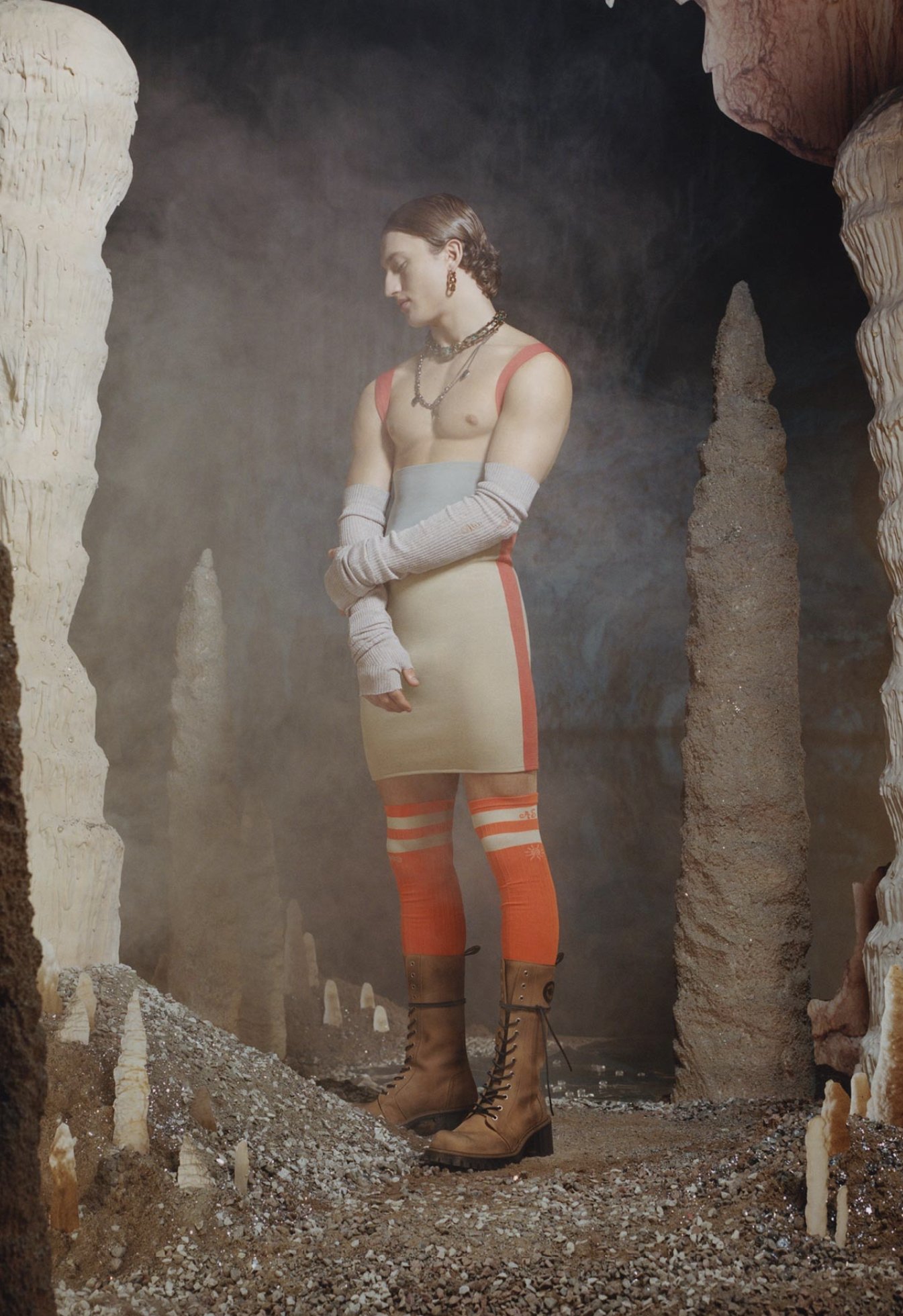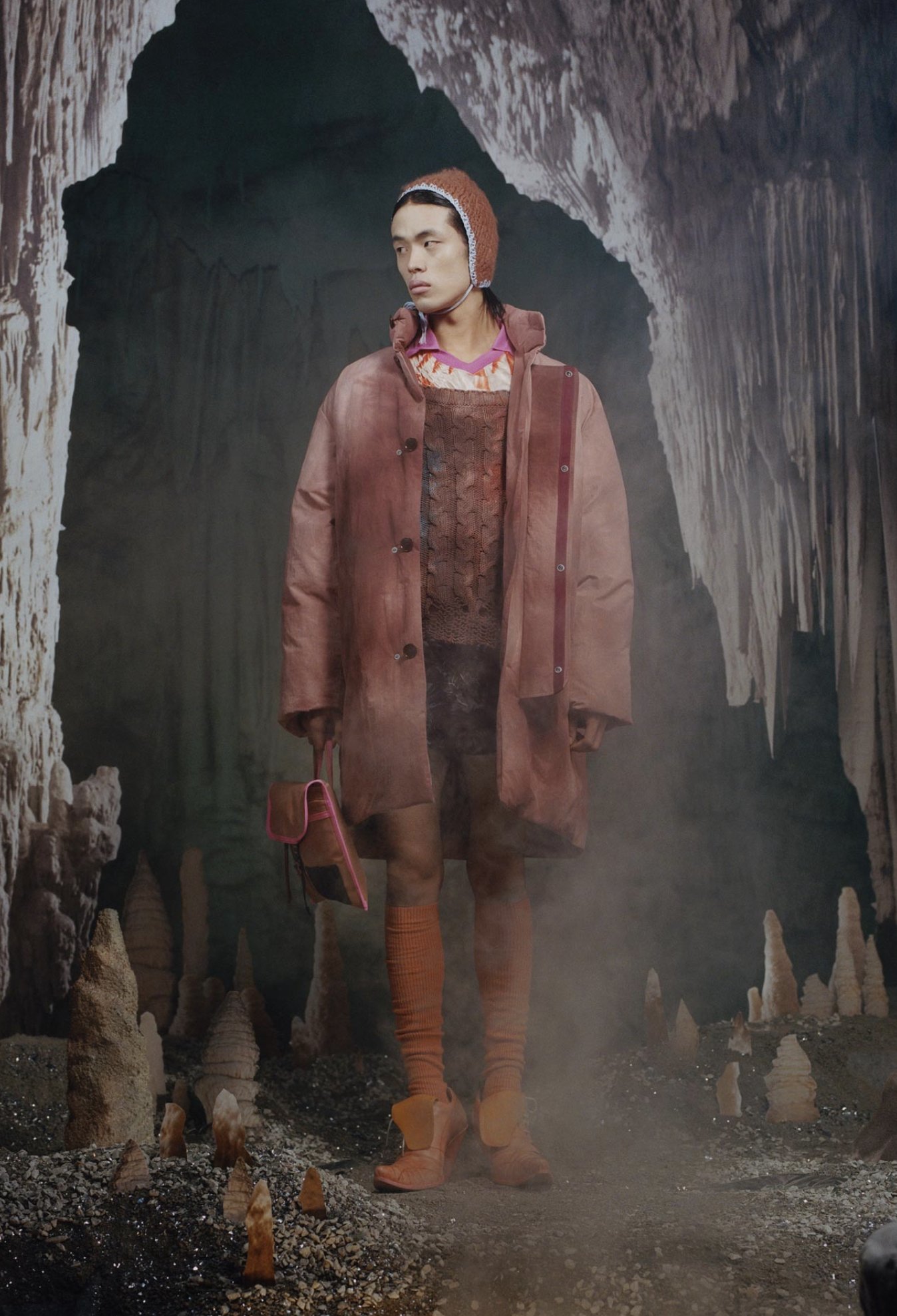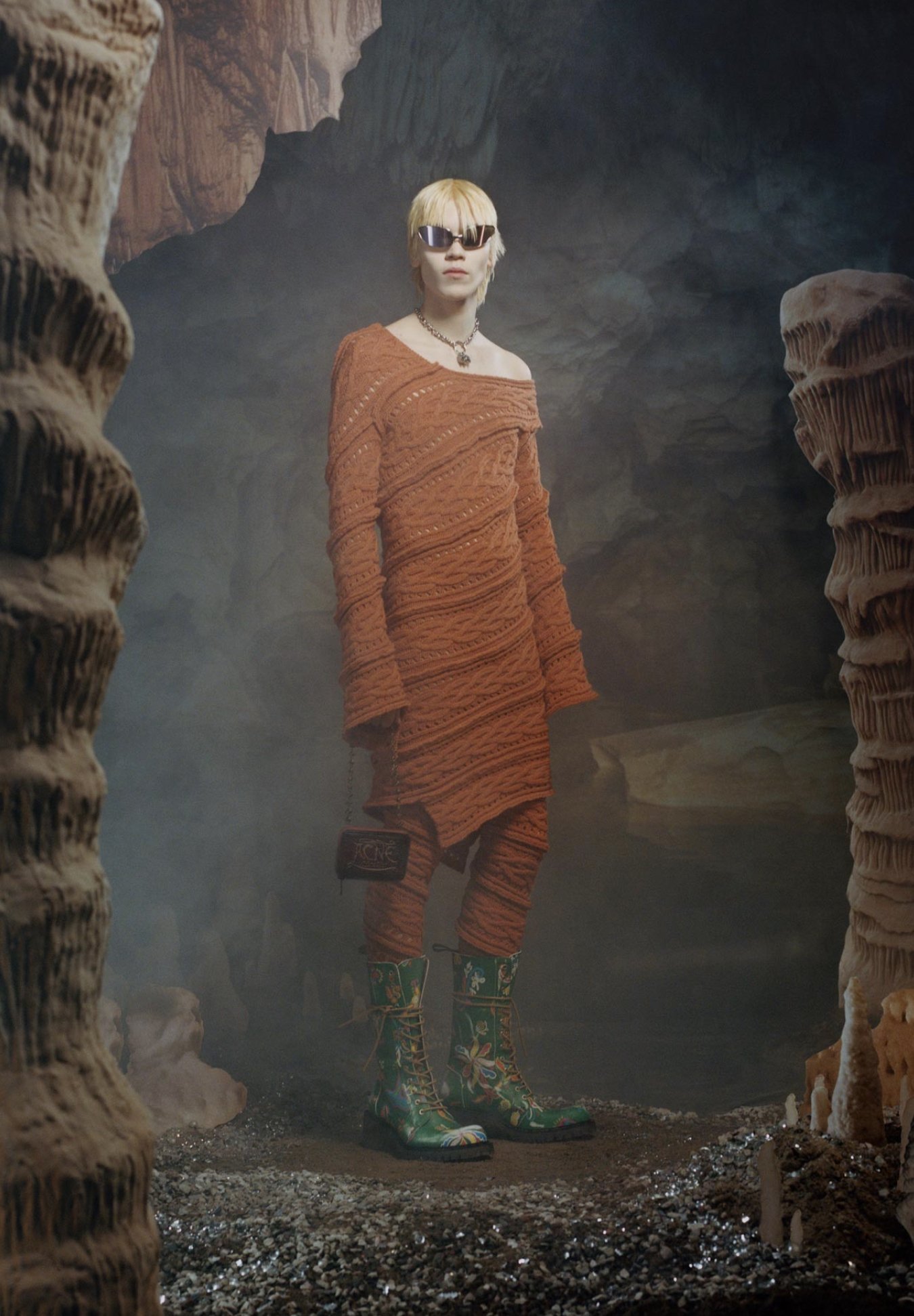Acne Studios is all for Masculine Aesthetic, Not Masculinity Itself
Acne Studios unveiled its Fw23 Men’s collection and immediately became one of the forefront collections pertaining to the ongoing discourse on gendered dress codes. Unisex or genderless clothing is not a new concept and if you ask me it is almost like flowers for spring “groundbreaking” which unlIke on the movie this time it’s a good thing. More and more we are seeing how each fashion house starts to adapt the idea of genderless as a quintessential part of their designs rather than treating it as a passing trend.
Courtesy of Acne Studios
Johnny Johansson, Acne Studios’ creative director, presented what can be described as a very queer collection. Johansson’s can inspiration came from the idea of the so-called new man, one that can express vulnerability aesthetically. What better way to showcase this juxtaposition and merging of the ultra-feminine and ultra-masculine than having a cave, the highest symbol of masculinity and all of its suffocating outdated practices, as the backdrop.
Womenswear, meaning feminine silhouettes, motifs, textures, lines, cuts, transitioning into menswear was the clear dominaniting proposal. Two design compositions who carry monumental and heavily charged symbolisms and meanings.
A dress is in fact just a dress, but when given context a dress symbolizes sexuality, innocence, consent and when worn by a man it symbolizes weakness, weirdness, queerness (used as an insult). So as repetitive as genderless discourse might seem at times it is incredibly important as it helps broaden the definition of masculinity in a world that so desperately needs it.





Acne Studios FW23 proposition is clear; genderless, queer, bohemian, grunge, contemporary and relevant. The masculine allure was present although not in its traditional form, a design proposal that affirms Johanssons’ statement “I feel comfortable with masculine aesthetic, not with masculinity itself”.


